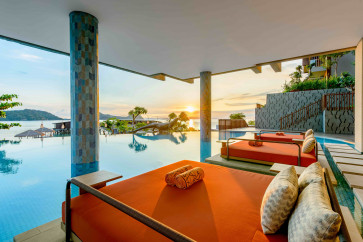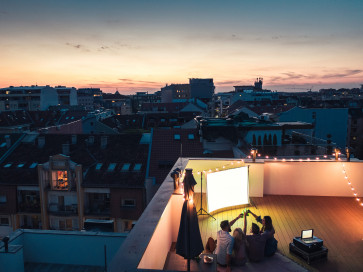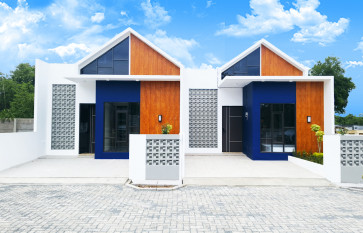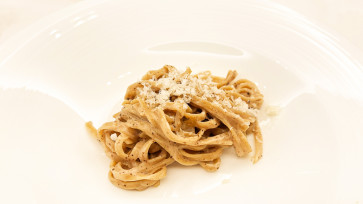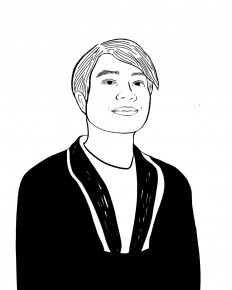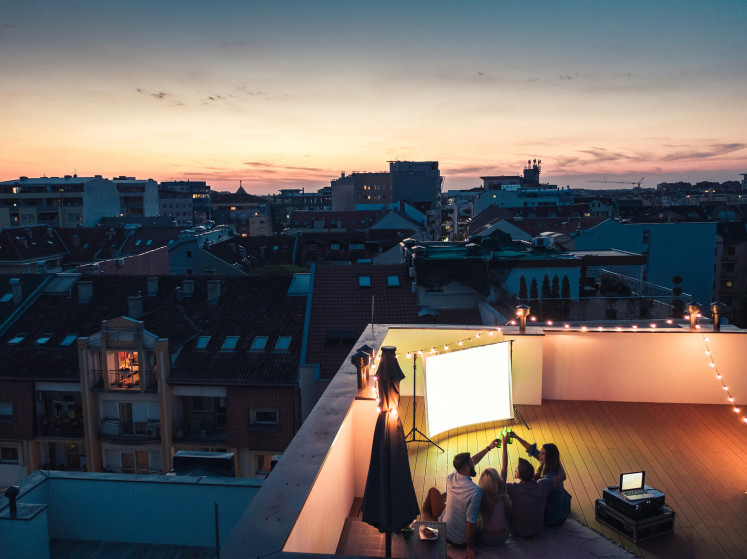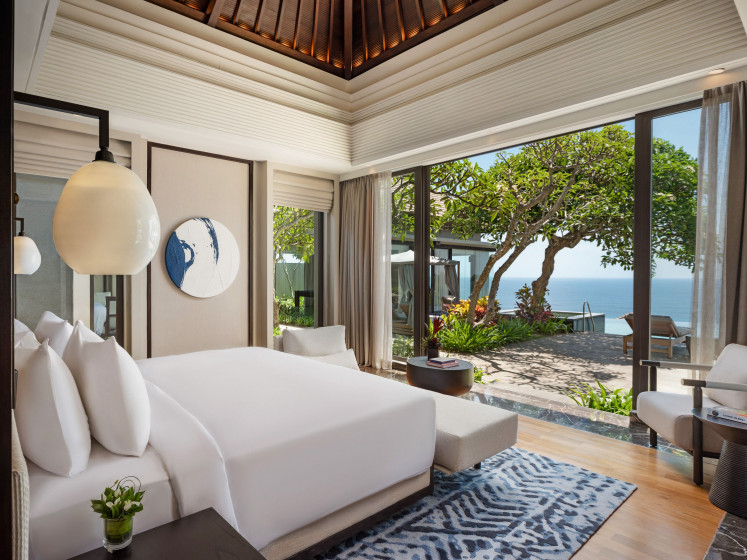(Courtesy of Climbing Cult Party)
I looked up at the towering wall in front of me, adorned with colorful holds in weird shapes and sizes. I climbed, I fell, I climbed again and then the next climber tried to succeed where I had failed. I cheered them on as they reached the summit.
This is the addictive loop of rock or wall climbing, and I’m not alone in this obsession.
The sport is enjoying a surge in popularity these days, not just because of Veddric Leonardo’s historic gold medal win at the inaugural men’s speed climbing event at the Paris Olympics last month, but also because of the increasing number of climbing walls in Jakarta and the influence of social media.
This was obvious at the Climbing Cult Party, a bouldering competition held in Jakarta last month, organized by the indoor climbing gym IndoClimb and the climbing fashion brand Mont Hood. There were 316 climbers competing across six categories this year, from children to beginners to professional athletes, more than double last year’s 115 participants.
So, what’s behind this sudden rise in popularity?
Community-driven rise

Thank you!
For signing up to our newsletter.
Please check your email for your newsletter subscription.
There are now IndoClimb locations in Lippo Mall Kemang and FX Sudirman mall, as well as Climb On at Plaza Semanggi and the recently opened Boulder Planet in Neo SoHo. You can also find indoor climbing gyms in Tangerang, Banten; and Bogor, West Java.
For outdoor walls, there’s the Jakarta International Climbing Wall Park at the Jakarta Garden City, and another at Stadion Rawa Badak in North Jakarta, among others.
The range of climbing locations across Greater Jakarta today is a far cry from when Jerry Marvin Chandra, creative director of Mont Hood and the committee head of this year’s Climbing Cult competition, started his climbing journey in 2015.
“I really had to search back then to find a place to climb in Indonesia,” he tells me on the sidelines of the competition. "The sport had a very grassroots community, and climbers were eager to seek and share information on where they could climb."
This community aspect is key, because gyms won’t thrive without a strong base of climbers. This has since been amplified by social media, Jerry explains.
"At its core, climbing is a supportive sport. People help each other solve routes, giving tips when someone is struggling. There’s no gatekeeping—the community is welcoming, and that’s what makes it easy for people to become passionate about climbing," he says.
The social nature of the sport was a main attraction for Feeza, a fellow regular climber at IndoClimb FX.
"It’s a sport you do at your own pace, kind of like going to the gym but way more fun," he says. "What excites me the most is the social aspect. I usually go with friends, and we take turns attempting routes, encouraging each other or joking around when someone makes a silly mistake."
Read also: The rise of Jakarta’s bite-sized tastemakers
A strategy game
Climbing is also a visually engaging sport, perfect for sharing on social media. Every route is different, and each climber has a unique approach, making it fun to watch and share.
The event Veddric won, speed climbing, is just one of the three climbing disciplines, alongside lead climbing and bouldering. In speed climbing the goal is simple: to complete a standardized route as quickly as possible.
Lead climbing, on the other hand, tests endurance. Climbers scale routes that vary at each gym, aiming to go as high as possible while clipping the ropes to bolts along the way.
Bouldering is the most accessible of the three, as no harnesses or ropes are required, only climbing shoes. The routes, or “problems,” are shorter, averaging around four meters in height, but they demand intense bursts of energy.
"Each route is so different, and every climber has their own way of solving it. The problem-solving aspect of the sport is so much fun! Not being able to finish a route, reflecting on how you can improve and finally reaching the top the next time you climb is incredibly rewarding," said Freya, a relatively new climber who is based in Tokyo. She recently bought her own pair of climbing shoes—a sign of her growing dedication to the sport.
This emphasis on creative problem-solving is why Jerry and his team enlisted Takeshi Tokinaga, the owner of Maboo Climbing Gym in Tokyo, Japan, to be their route setter for the Climbing Cult Party.
Takeshi is an internationally recognized route setter, with experience creating routes for competitions and gyms in the United States, Taiwan and Hong Kong.
"I want to create routes that challenge climbers while also making the audience happy. My goal is to bring more variety to the climbing experience here," he says.
A humbling sport
The design of routes is critical, because the sense of accomplishment climbers feel when completing increasingly challenging routes is one of the main reasons people keep coming back.
“The gradual improvement you see through completing routes of increasing difficulty feels incredibly rewarding. In climbing, progress is so tangible because of the clear difficulty levels, which make it easier to see how far you’ve come compared to other sports,” said Anan, an avid climber at Climb On Plaza Semanggi.
For Aliya, who mostly climbs after work, the individualism in the sport is what keeps her hooked. "Climbing seems simple, but it’s much more complex and strenuous than it looks. Every move you make reflects who you are, and each decision showcases your personality as a climber."
Sergio, a fellow spectator I spoke to on the sidelines, is drawn to the competitive aspect of climbing. "You don’t get this kind of challenge in other solo sports. The biggest obstacle is yourself, and that really pushes me to keep climbing."
"I love the pride and euphoria I feel after finishing a tough climb, especially after multiple attempts. It’s a humbling sport because failing is part of the process. I also think it taps into a primal instinct to climb, which is pretty cool," said Masaki, another climber based in Tokyo.
Listening to their answers, I could relate to the motivations they shared. One thing is certain: we all agree that the only way for this sport is up.
Read also: Waves, Wi-Fi and work: Into the Nomadland of Canggu
This article is part of The Weekender, a biweekly tabloid that appears in the Saturday edition of The Jakarta Post. Offering a variety of feature articles on lifestyle and culture, it aims to enriching your reading experience. Subscribe here to access The Jakarta Post’s Saturday edition and all Premium content.




